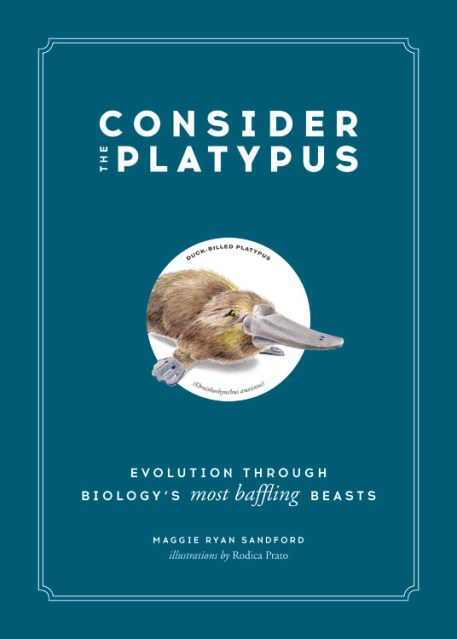
Consider the Platypus
Evolution through Biology's Most Baffling Beasts
Contributors
Illustrated by Rodica Prato
Formats and Prices
Price
$29.99Price
$38.99 CADFormat
Format:
- Hardcover $29.99 $38.99 CAD
- ebook $15.99 $20.99 CAD
Also available from:
*FINALIST FOR THE 2020 GENERAL NONFICTION MINNESOTA BOOK AWARDS*
Interested in the origins of the species? Consider the Platypus uses pets such as dogs and cats as well as animal outliers like the axolotl and naked mole rat to wittily tackle mind-bending concepts about how evolution, biology, and genetics work.
- Peppered Moth, which changed color based on the amount of soot in the London air;
- California Two-Spotted Octopus, which has the amazing ability to alter its DNA/RNA not over generations but during its lifetime;
- miniscule tardigrade, which is so hearty it can withstand radiation, lack of water and oxygen, and temperatures as low as -328°F and as high 304 °F;
- and, of course, the platypus, which has so many disparate features, from a duck’s bill to venomous spur to mammary patches, that scientists originally thought it was a hoax.
Surprising, witty, and impeccably researched, Sandford describes each animal’s significant features and how these have adapted to its environment, such as the zebra finch’s beak shape, which was observed by Charles Darwin and is a cornerstone of his Theory of Evolution. With scientifically accurate but charming art by Rodica Prato, Consider the Platypus showcases species as diverse as the sloth, honey bee, cow, brown kiwi, and lungfish, to name a few, to tackle intimidating concepts is a accessible way.
Genre:
-
"I have met Maggie Ryan Sandford, and I have read her work. And I am confident that she is the ideal woman to explain why dolphins are weird."Chuck Klosterman
-
"Consider the Platypus is a marvelously fun book, one that encourages the reader to think about evolution from new angles by exploring the "oddballs of the animal kingdom," who are some of the favorite animals of evolutionary biologists."American Scientist
-
A pre-blurb from Mary Roach, who doesn't blurb:"Oh man, everyone should be writing science in oversized graphic form, especially about evolution. Everyone loves weird animals. I'm envious."Mary Roach
-
"Science buffs and animal lovers will gravitate to Consider the Platypus.... If you're intrigued by DNA-altering octopuses, radiation-withstanding tardigrades, and venomous platypuses, then you should pick [it] up!"-Ars Technica
-
"In Consider the Platypus, science journalist Maggie Ryan Sandford examines the curious species [of platypus] and more than 40 others of particular interest to the study of evolution... In cheery, pun-filled prose, she reviews the physical characteristics of the species, sketches its development and considers the evolutionary lesson it has to teach."Wall Street Journal's "What to Give: Books on Nature"
- On Sale
- Aug 27, 2019
- Page Count
- 272 pages
- Publisher
- Black Dog & Leventhal
- ISBN-13
- 9780316418393
Newsletter Signup
By clicking ‘Sign Up,’ I acknowledge that I have read and agree to Hachette Book Group’s Privacy Policy and Terms of Use








